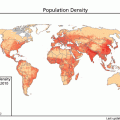Classification: ICD-9 070.5; ICD-10 B17.2.
Syndromes and synonyms: Epidemic non-A non-B hepatitis, fecal–oral non-A non-B hepatitis, enterically transmitted non-A non-B hepatitis.
Agent: Hepatitis E virus (HEV), a non-enveloped single-stranded RNA virus, genus Hepevirus, the single member in the Hepeviridae family. The virus can be classified into four genotypes (genotype HEV-1 to HEV-4), and >24 subgenotypes (1a–1e, 2a–2b, 3a–3j, and 4a–4g). Avian isolates of HEV are now considered to be a separate genus. HEV was discovered in the 1980s as a result of a large water-borne non-A non-B hepatitis outbreak in India between 1978 and 1979.
Reservoir: Humans are the natural host. Numerous mammals have serologic evidence of HEV disease, including but not limited to: pigs, cattle, sheep, goats, horses, macaques, cats, dogs, rabbits, mongoose, deer, wild boar, rats, and mice. HEV in pigs is asymptomatic, but there is transient viremia and excretion of virus into the environment.
Transmission: Fecal–oral route, mainly via fecally contaminated water, but also via: food, materno-fetal, and transfusion of blood products. Direct person-to-person transmission is uncommon.
Cycle
Stay updated, free articles. Join our Telegram channel

Full access? Get Clinical Tree




